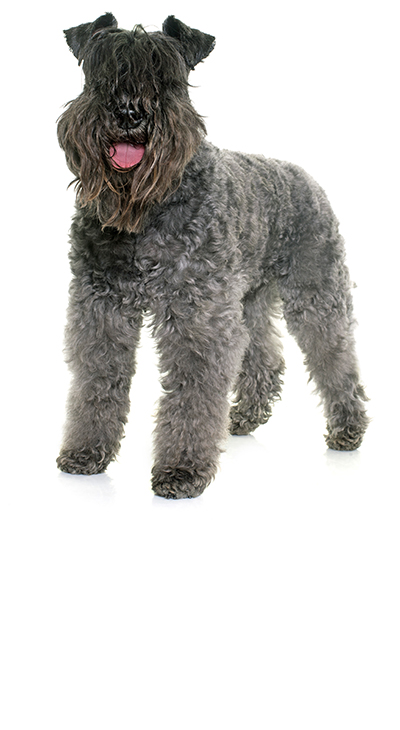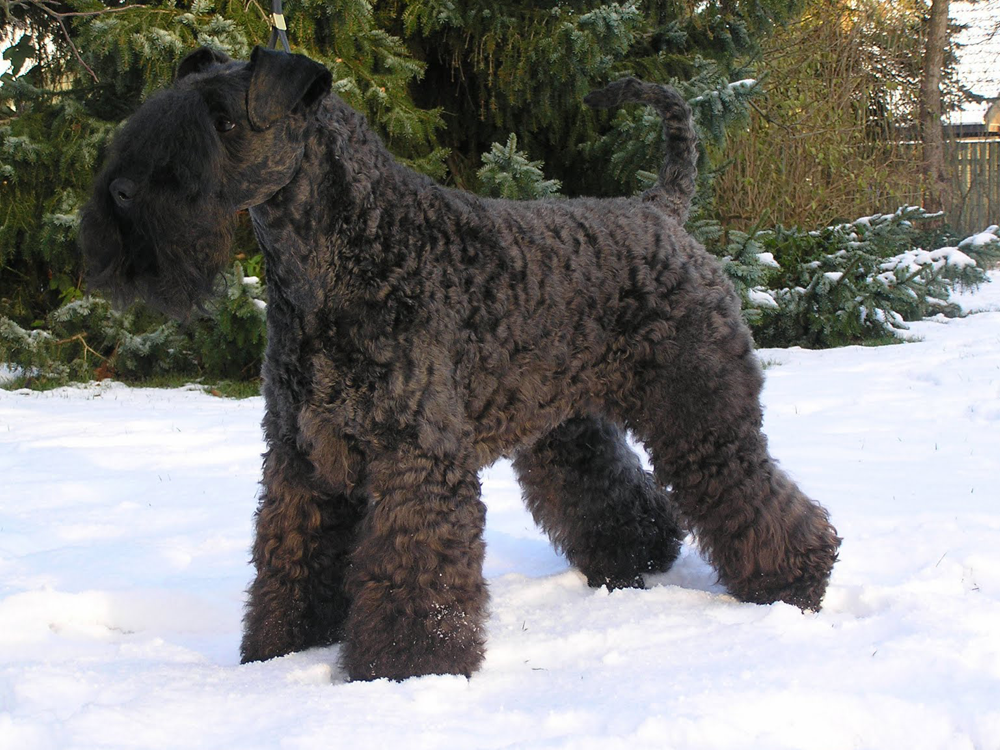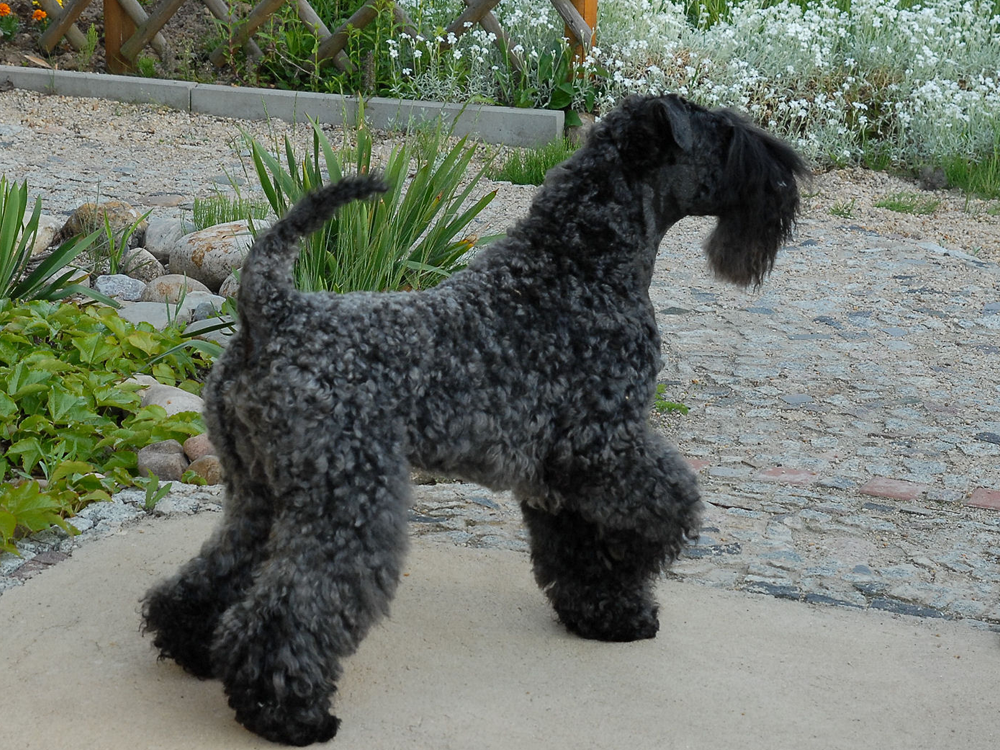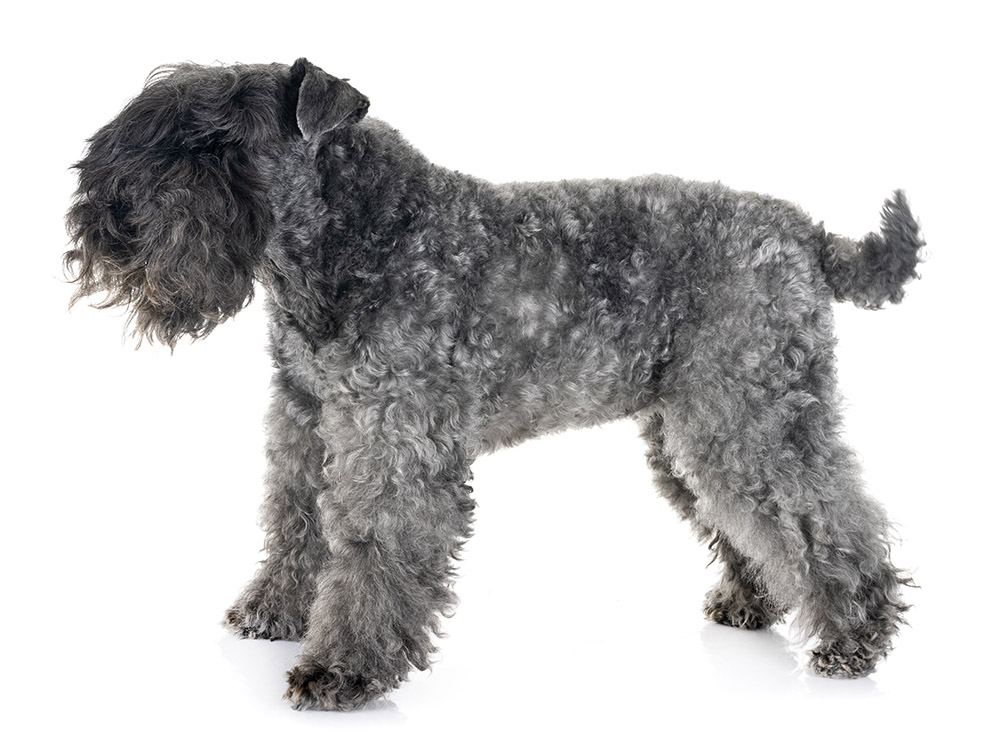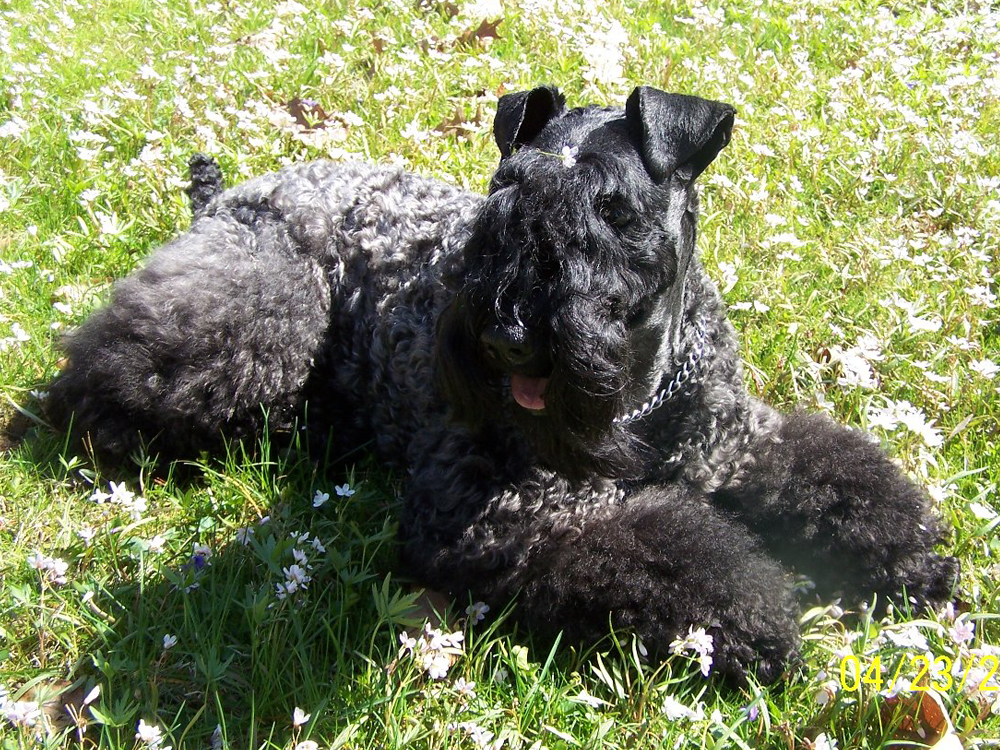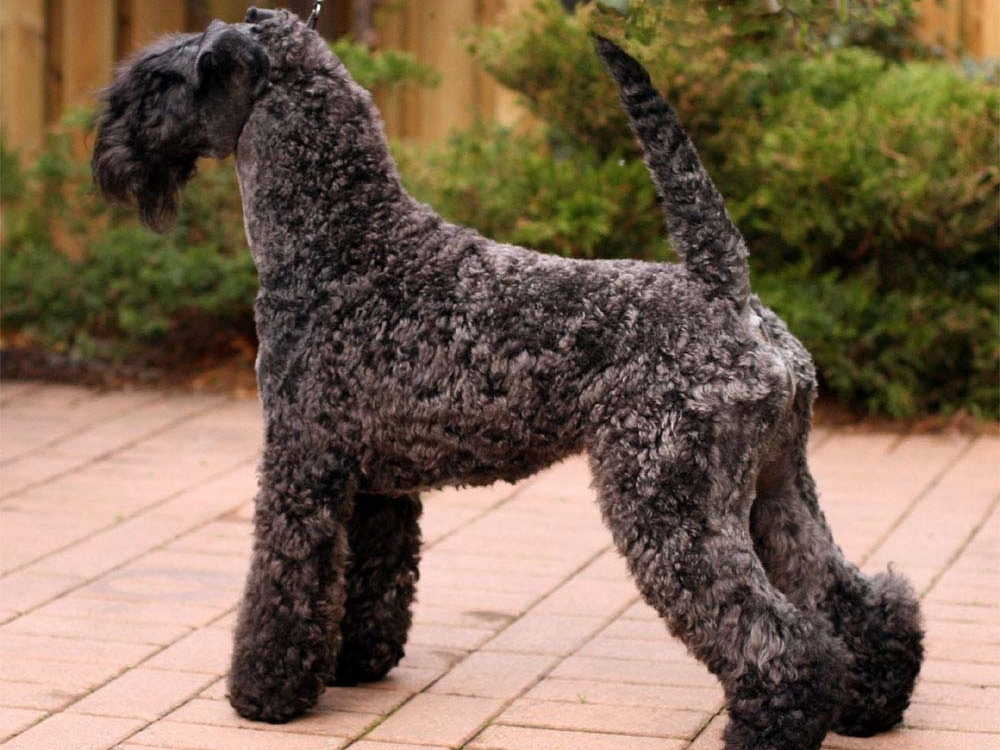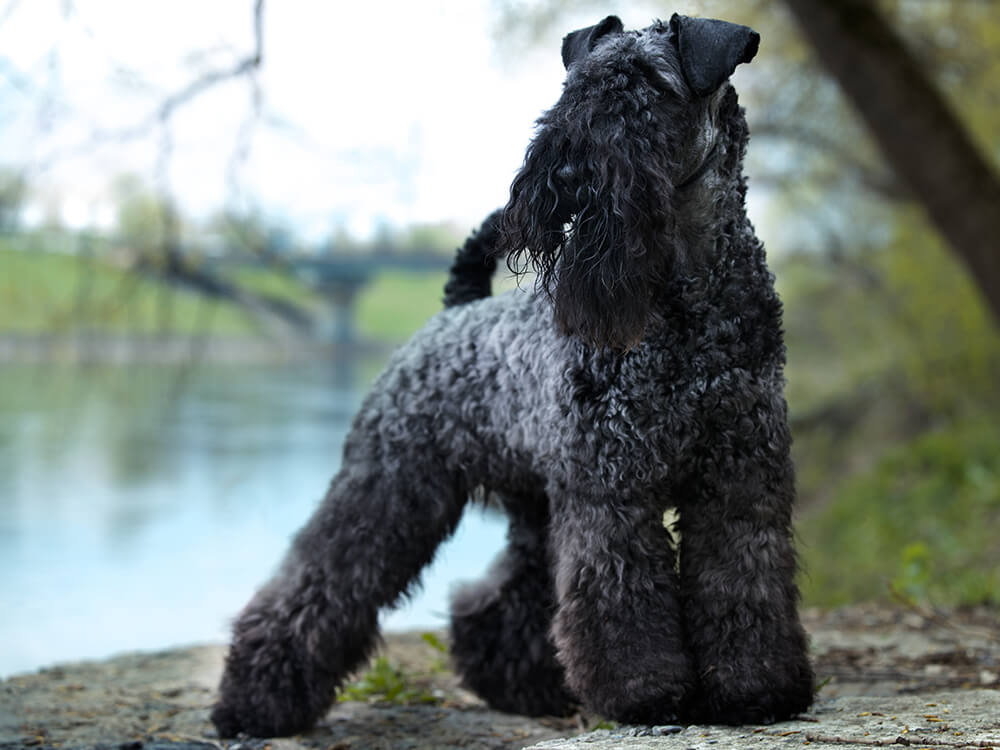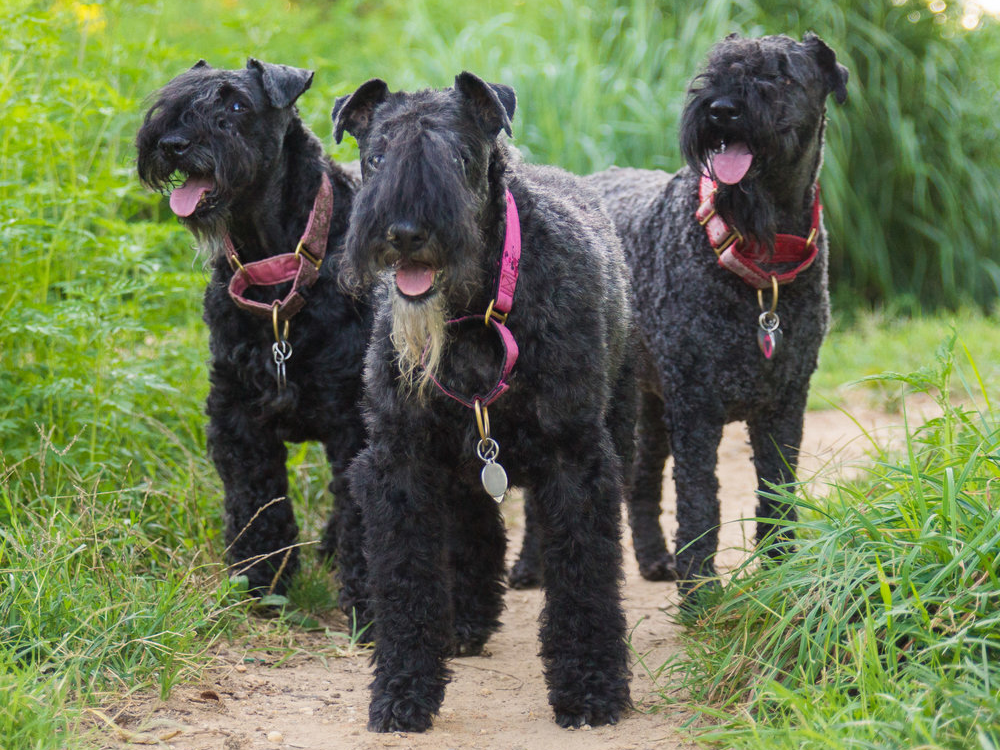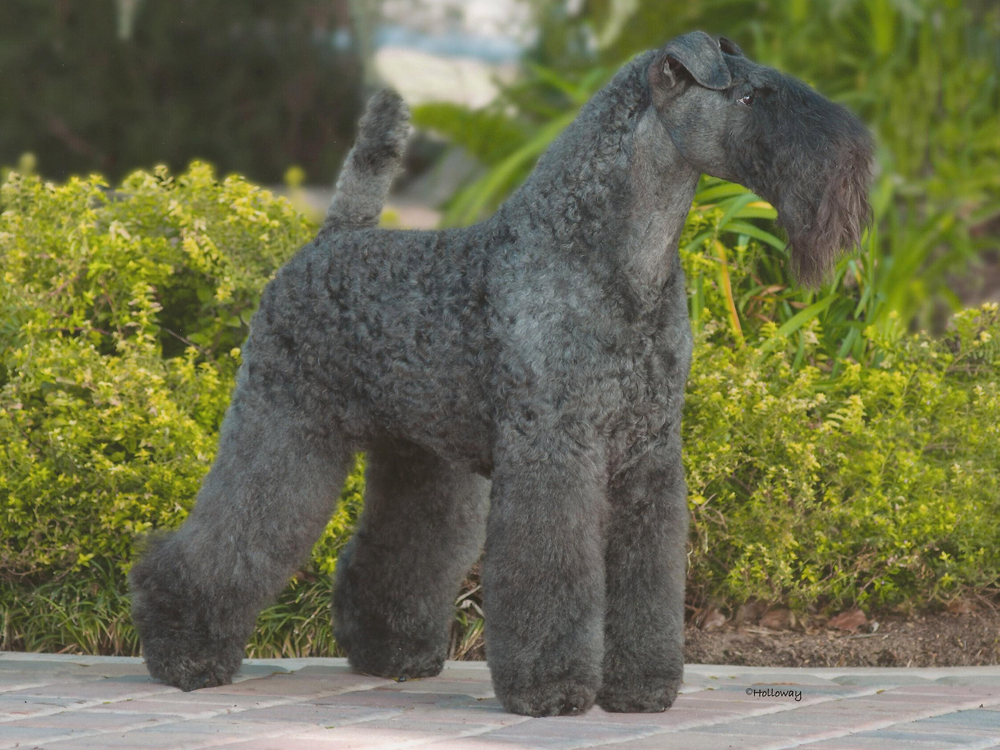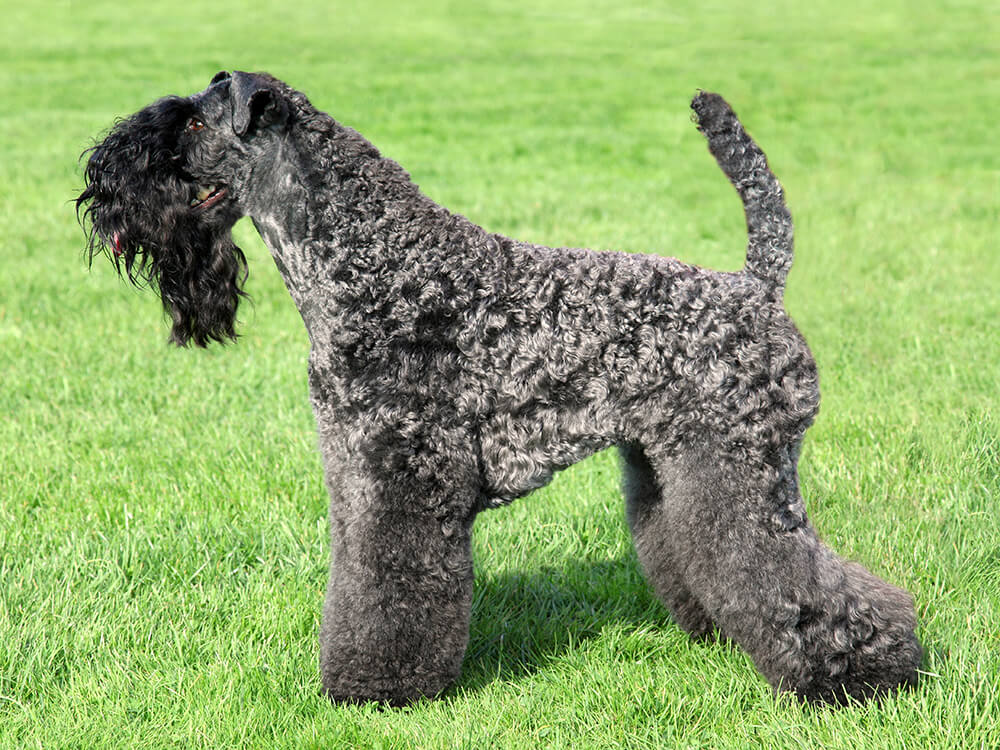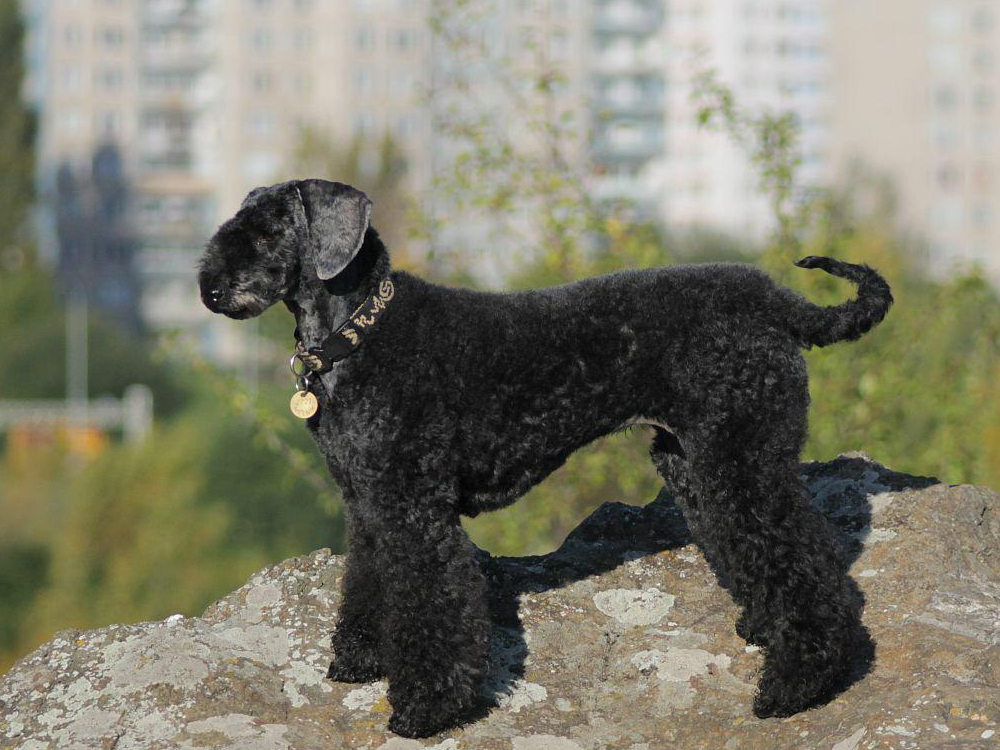
Kerry Blue Terrier Breed Pictures
Vital Breed Stats
| Height: | 46 - 51 cm M | 44 - 48 cm F |
| Weight: | 15 - 18 kg M | 15 - 18 kg F |
| Breed Group: | Working Dog Group |
| Life Expectancy: | 13 - 15 years |
| KC Registered: | No |
Breed Characteristics
| Size: |  |
| Grooming: |  |
| Exercise Level: |  |
| Trainability: |  |
| Barking Level: |  |
| Good with Children: |  |
| Good with other pets: |  |
| Affectionate: |  |
| Protective: |  |
| Cost to Keep: |  |
Give a thumbs up if you love the Kerry Blue Terrier

0
More About the Breed
History
The history behind the Kerry Blue Terrier breed is a mystery as varying stories surround it. The most popular one is that it originated in the mountainous country of Kerry in Ireland, thus the name. However, other experts believe it actually came from the Irish county of Tipperary with the Irish folklore saying a blue dog survived a shipwreck off the cost of Southern Ireland and swam ashore. Locals bred this fascinating blue-coated dog with the different terriers in the area, including the Wheaten Terrier, providing the foundation stock of the Kerry Blue Terrier.
Kerry Blue Terriers became highly prized hunters and ratters because of their remarkable courage as well as guarding and herding instincts. They were also consistent at dog exhibitions and shows during the 1900s. However, this breed recognised under the Terrier group, has been placed on the vulnerable native breed list of The Kennel Club.
Appearance
With an average weight of 30 to 37 pounds and height of 44 to 48 centimetres, the Kerry Blue Terrier is a compact and proportioned breed that boasts of a lovely blue wavy hair. It has a well-balanced head that is flat on top, as well as strong a foreface. It has dark medium eyes that exude a vigilant and typical terrier expression. It also has v-shaped ears, a strong jaw with a perfect scissor bite and mouth and gums that are dark in colour. Its body is short with a good depth of brisket and well-sprung ribs. Its tail, which used to be customarily docked, is set high and erect.
The most striking feature of the Kerry Blue Terrier is its blue astrakhan-type coat that is soft, silky, dense, and wavy. According to KC standards, the accepted colour for adult Kerry Blues is blue of any shade, with or without black points. It is permitted to have white hair on the chest. Puppies are generally born with black coats, which gradually turns blue as they turn 18 months.
Grooming
Temperament
The Kerry Blue Terrier is a hardworking, independent and confident dog. Males tend to be a bit aggressive in situations that are stressful and become dominant. This being said, the breed is not for inexperienced owners as it needs someone that is firm yet fair. Early socialisation and training are important so it learns its place in the pack, which is below everyone else at home. As a full-fledge terrier, it has a tendency to chase, dig and bark. People who are willing to put up with its tendencies will enjoy its high-spirited and silly attitude.
Kerries are patient toward children but are better for families with older kids that know how to approach and handle dogs. Because it can be boisterous when playing, it can accidentally knock a toddler over. Regardless of the age of the child and the breed of the dog, parents need to supervise their kids and teach them to treat pets with kindness and respect.
Intelligence
The Kerry Blue has a strong prey drive so it can be difficult when it comes to other pets and small animals. It can sometimes become aggressive and give chase.
The Kerry Blue is intelligent but like most terriers, it is strong-willed, which makes it more challenging to train. As previously mentioned, it needs an experienced owner that could guide it to be obedient. Harsh correction would never work for this proud and independent breed so prepare a lot of patience and positive reinforcements.
Nutrition
- Senior and less active: up to 870 calories daily
- Typical adults: up to 980 calories daily
- Physically active/working dogs: up to 1,100 calories daily
Feeding
Health
Exercise
Cost of Ownership
Since the Kerry Blue Terrier is a rare breed in the UK, you will have to be on a waiting list to be able to obtain one. The cost of a well-bred pedigree puppy can range from £500 to £1,000. If you can afford to purchase one, will you be able afford the costs to properly raise it? Yes, caring for a dog can be very expensive. To start off, pet insurance expenses for basic coverage start at £20 a month.
Initial equipment will be around £200. Food and treat costs will set you back £40 a month. Veterinary expenses can go as high as £900 a year especially during the first few months and the time your dog will be neutered or spayed. Preventive care will include vaccination and booster shots against deadly diseases, as well as deworming and flea treatments.
As a rough estimate, you will need around £40 a month to care for a Kerry Blue Terrier, excluding the initial cost of purchasing the puppy.
Kerry Blue Terrier Breed Highlights
- The Kerry Blue Terrier is a medium breed that is fun-loving, independent and confident.
- It is smart but can be difficult to train because of its independent nature.
- This breed will thrive in the hands of experienced owners and families with older children.
- It has high grooming needs, which involves regular trimming at the groomer’s.
- The Kerry Blue is a rare breed in the UK.
